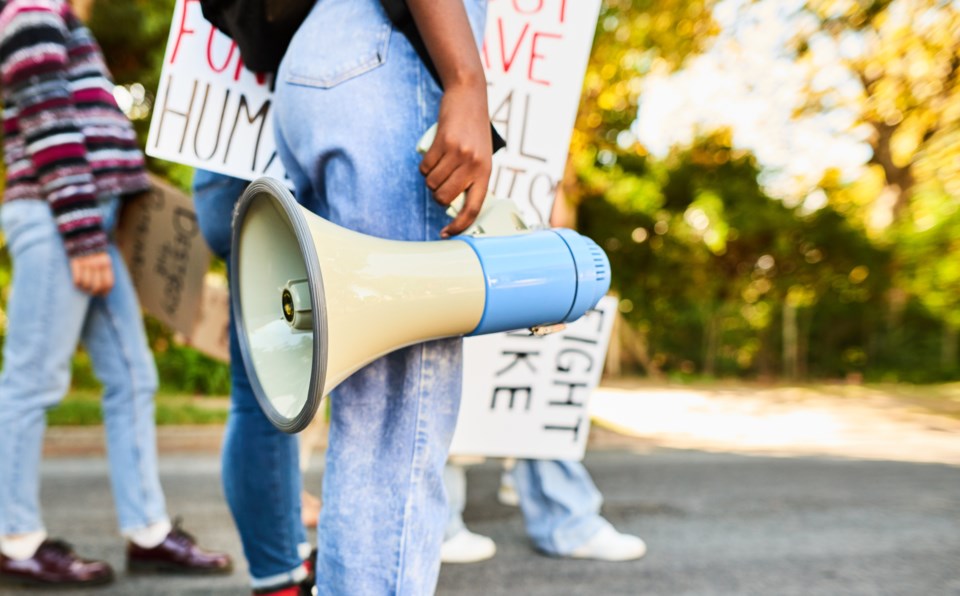British Columbians are currently preparing for municipal elections and a governing party leadership race that will unveil a new premier for the province. Over the past few months, we have seen public protests on a wide range of issues, as well as seemingly interminable sessions where councils discuss the pros and cons of community plans.
Research Co. and Glacier Media wanted to study the way in which British Columbians participate in public life. We know that voter turnout tends to be higher in federal and provincial elections than in municipal democratic processes. We have also been exposed to the practice of groups purporting to represent the entire population, both in media coverage and social media commentary.
In 2011, a survey I conducted on “Occupy Vancouver” showed 29 per cent support across the city, 70 percentage points lower than what its organizers claimed. The province has also spawned various “Astroturf” groups of “concerned citizens” with flashy and ephemeral websites that fail to divulge who these “concerned citizens” are.
When we asked British Columbians about activism, three in 10 (30 per cent) told us they have used social media to protest or support an issue. Smaller proportions have donated money to an organization that supports or opposes an issue (25 per cent), attended a protest (14 per cent) or taken legal action against a development or project (five per cent). In addition, 15 per cent of residents have attended a public consultation meeting or process.
Some differences are easy to spot. Residents of Indigenous descent are more likely to attend protests, while those of South Asian heritage are more likely to have participated in political campaigns.
To test the willingness of British Columbians to react, we asked questions about specific establishments trying to set up shop within the confines of a municipality or, in the case of smaller facilities, three blocks away from the home of respondents.
Not everything gets people riled up. Majorities of British Columbians would take no action if wind turbines (67 per cent), a recycling plant (64 per cent), a casino (62 per cent) or a military base (57 per cent) were to seek a permit to operate within the boundaries of their municipality.
The situation changes when residents ponder the future of other facilities. About one in five residents are willing to take a passive approach to protest a natural gas pipeline (19 per cent), an incinerator for waste treatment (21 per cent) and a prison (22 per cent).
When it comes to active protest – such as donating to opponents and attending town halls – potential participation reaches 29 per cent for a nuclear power plant and 24 per cent for a coal terminal. Everything else finds fewer people willing to devote their time and/or money to a cause.
The numbers shift towards acceptance when we focus on establishments seeking a permit to set up within three blocks of a respondent’s home. Majorities of British Columbians would have no problem with eight different venues in close proximity: a hospital (75 per cent), a pub or bar (69 per cent), an entertainment complex (also 69 per cent), a retail or mall development (65 per cent), a recycling depot (63 per cent), a marijuana store (60 per cent), a low-income housing project (58 per cent) and a cellphone tower (54 per cent).
Three facilities prove more contentious, but not extraordinarily so. Only 31 per cent of British Columbians would stay silent if a sewage or wastewater plant sought a permit nearby and 43 per cent would be unmoved by a composting site or a homeless shelter.
Passive protest reaches 20 per cent for a composting site, 22 per cent for a homeless shelter and 27 per cent for a sewage plant. Active protest stands at 20 per cent for both the composting site and the homeless shelter, and at 25 per cent for the sewage plant. Simply put, the chances of a majority doing something to oppose a project are slim, regardless of what opponents may suggest online or in conversations with reporters.
When it comes to how the public would react to a low-income housing project three blocks away from their place of residence, active protest reaches 20 per cent among those aged 18 to 34, 19 per cent among BC Liberal voters and 16 per cent among residents of South Asian heritage.
With housing, homelessness and poverty the most important issue facing the province, our exposure to the hyperbole supplied by groups with vested interests is only going to grow more intense. This type of rhetoric would be justifiable if residents were pondering a nuclear power plant, a coal terminal or a wastewater treatment facility – not homes. British Columbia does not possess a significant proportion of residents who desire no change in their municipalities or neighbourhoods. •
Mario Canseco is president of Research Co.
Results are based on an online study conducted from July 4 to July 6, 2022, among 800 adults in British Columbia. The margin of error, which measures sample variability, is plus or minus 3.5 percentage points, 19 times out of 20.




